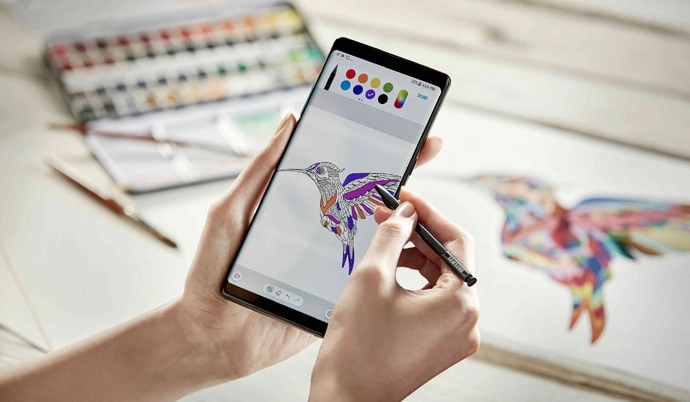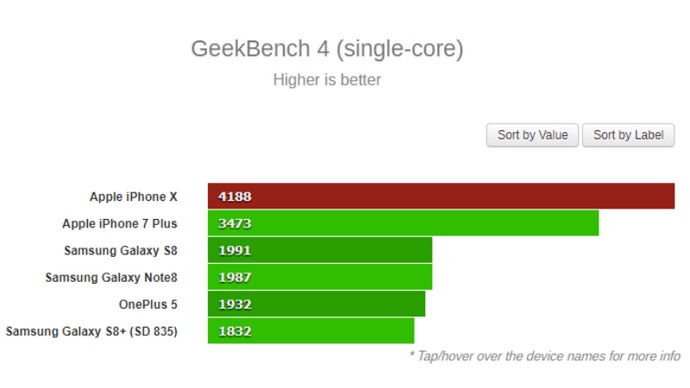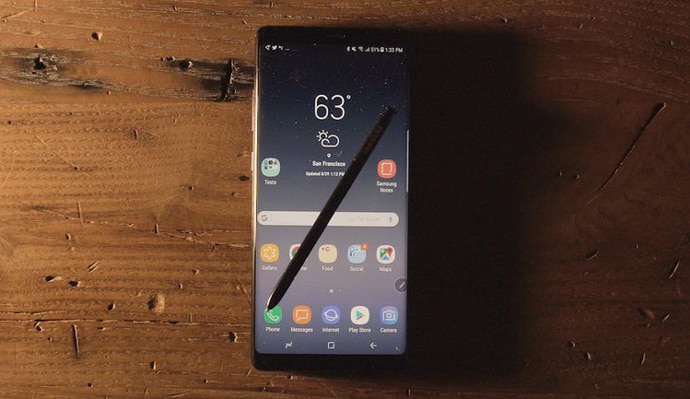iPhone X vs Galaxy Note 8: Which phone should you buy?

When Apple's CEO, Tim Cook took to the stage to announce the tenth-anniversary edition of the iPhone in September 2017, the industry was introduced to what was touted as “the future of the smartphone”. Cook proclaimed that like the first iPhone, that revolutionised a decade of technology and changed the world in the process, the iPhone X will set the path for technology for the next decade. Looks like those claims were built on solid ground.
The iPhone X which went on sale today was available only for a short while on pre-orders before going out of stock on Amazon and Flipkart within half an hour. Such interest in the device showed once again why Apple so confidently heralded it as the best smartphone ever to have been created by the tech giant.
But regardless of the feat, the iPhone X's true test will be when it faces off against powerful Android flagships. Today we compare it to arguably the best of the lot – Galaxy Note 8 – and see how it fares against it.
So let's get started.
Display and design
In terms of design, both phones have been crafted using sheets of reinforced glass and a sandwiched metal frame in between, but that's where the similarities end. The bezel-less displays on both the devices differ in terms of size and resolution with the iPhone sporting a 5.8-inch OLED display capable of churning out 458 ppi at a maximum resolution of 1125x2436 pixels, while the Galaxy Note 8 comes bearing a 6.3 inch 1,440x2,960 QHD+ display with a pixel density of 521 pixels per inch.
The device because of the inclusion of the infinity display borrows heavily from previous Samsung devices like the S8 and S8+, but still, manages to bring a fresh but welcome look to the Note series. To its credit, despite its huge frame, the Note 8 still feels like a device that fits in your palm really nice and feels like a perfect fit for two-handed use.
The iPhone X, on the other hand, looks nothing like anything Apple has created before. Its bezel-less display, lack of a home button and addition a cutout at the top of the screen – that houses within it an Infrared camera, hardware for the Face ID tech and a selfie camera capable of clicking portrait shots – makes it stand out from the crowd in a way that only the initial iPhones managed to do.

What's under the hood?
The Note 8 is a beast of a phone when it comes to the internals. The device uses the same Samsung Exynos 8895 and Qualcomm 835 SoCs found on the international and US variants of the Galaxy S8 and S8+. These have been paired with 6GB of RAM and up to 256GB of built-in storage.
Powering the package is a 3300 mAh battery which Samsung claims has been subjected to multiple checks to ensure that it does not blow up while sitting in your pocket. The battery also brings with it fast and wireless charging capabilities.
In comparison, the iPhone X runs the A11 Bionic SoC paired with 3GB of RAM. The A11 Bionic module comes with a dual-core Neural engine which will be used exclusively by the phone's Face ID hardware.
The battery on the device Apple claims provides more than two hours of battery time than the existing iPhone 7 phones.
Though the Note 8 may look like the more powerful option on paper, but in reality, things are very different. As Benchmark results show, the iPhone's A11 Bionic chipset runs circles around the Note 8's powerful hardware. Don't nbelieve us? Here are the results below.


What about the camera?
Well, it's a tight race here. One that looks destined to end in a draw.
The iPhone X's main camera module at the back brings with it dual 12-megapixel camera setup – same as in the iPhone 8 Plus– with f/1.8 and f/2.4 apertures. But unlike iPhone 8, the dual camera setup here brings with it optical image stabilisation in both the sensors. The rear camera array also has a quad-LED True Tone Flash.
There is even more interesting hardware fitted in the front camera module which houses the main camera, an infrared sensor and another camera sensor capable of throwing 30,000 invisible dots at the user's face that are used to create a detailed 3D model of the face for facial recognition purposes.
The Note 8 too comes with a 12-Megapixel dual camera module that sits next to the wide-angle sensor already found on the Galaxy S8. However, the front 8-Megapixel selfie camera on the Note 8 fails to match up to the depth sensing AR ready selfie camera module of the iPhone X.
But like we mentioned before, both phones remain at par when it comes to overall picture taking capabilities – an observation also highlighted by popular camera benchmarking portal. With an overall DxO mark score of 94, both the devices end up as great options if you are looking to click pictures from your phone.
All the cool features
With not much to choose between the two, what differentiates the two phones are the special features found on them.
For the iPhone X, it is the Face ID tech that helps it stand out from the crowd. In terms of usability – at least on paper – this looks to be a technology that could match the impact of the inclusion of fingerprint scanner on the previous generation iPhones.
Once setup, users can unlock their phones, pay for products and log into apps by holding the phone up to their face. The technology here is pretty sophisticated and uses dedicated hardware and software resource to create a detailed 3D model of the users face that Apple claims is almost 20 times more secure than the Touch ID technology on its previous phones.
The Note 8, on the other hand, comes with its trusted stylus that has a number of tricks up its sleeve. Be it drawing Live Messages, art, taking notes or simply hovering the tip of the S-Pen over a word for live translation, the stylus turns out to be more than just an expensive gimmick.
The device is also compatible with Samsung DeX - a specially designed docking station that hooks your phone up to a PC monitor so you can use it as a computer, a trick that the iPhone X cannot pull off.

Price
There Note 8 with all its tricks and hardware comes to India in a single 64GB storage variant for Rs 67,900. Considering the US pricing of the device $930 (approx Rs 60,000) Samsung has played an aggressive hand by bringing its flagship device at such a competitive price.
The iPhone X in comparison, starts at Rs 89,000 for the 64GB and goes up to Rs 1,02,000 for the 256GB variant. And that's where things really get interesting and the Note 8 definitely takes a march.
But having said, as is the case with all iPhones, this is a premium device, and possibly a limited edition one at that, so for many, even this exorbitant price that goes north of a Lakh may just make sense.

So the winner is...
Well, there isn't any. The Galaxy Note 8 and the iPhone X are about as close as you can get in terms of design, display, power, and cameras.
Both the devices offer more than enough gimmicks to win over your heart, and regardless of the results of synthetic benchmarks, enough power to tackle any real world applications you throw at it. So the choice, in the end, comes down to your personal preference between iOS and Samsung flavoured Android ecosystem.
But if you really need an answer here, the 64GB iPhone X definitely looks slightly overpriced at a price that is more than Rs 20,000 dearer than what the Galaxy Note 8 is retailing for, and as such, the temptation to buy it should be ignored.
Unless of course, you're a hopeless romantic, madly in love with the charm of the bitten apple that the iPhone X will come flaunting on its back. In that case, spend away. Afterall, you can't put a price on happiness, and for someone in love with Apple, the iPhone X will bring bucket loads of it.

